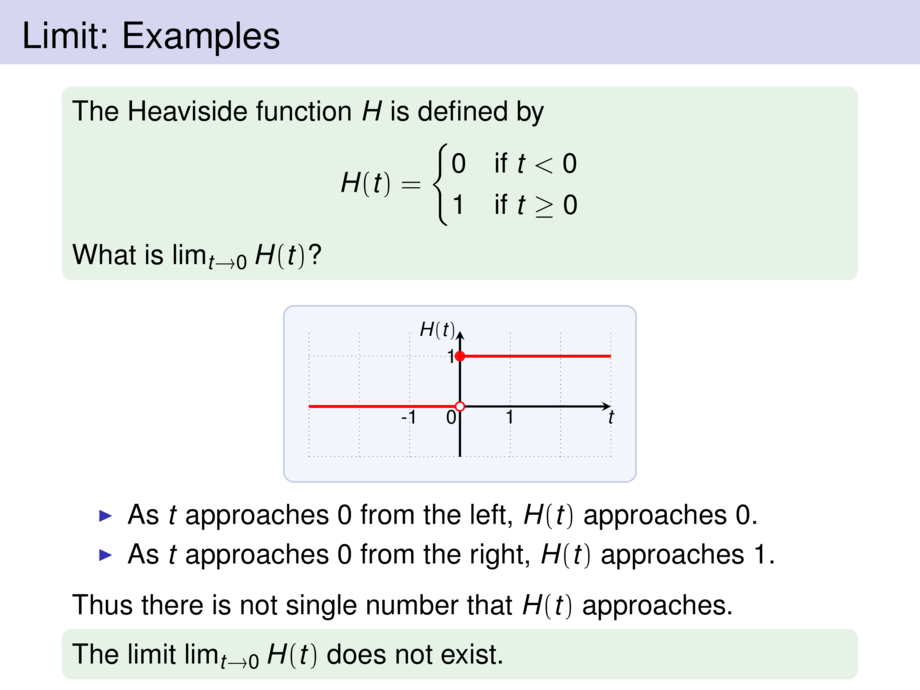



































































































74/154
\begin{frame}
\frametitle{Limit: Examples}
\begin{exampleblock}{}
The Heaviside function $H$ is defined by
\begin{talign}
H(t) = \begin{cases}
0 & \text{if $t < 0$}\\
1 & \text{if $t \ge 0$}\\
\end{cases}
\end{talign}
What is $\lim_{t\to 0} H(t)$?
\end{exampleblock}
\smallskip
\begin{center}
{\def\diax{t}\def\diay{H(t)}
\scalebox{.7}{
\begin{tikzpicture}[default]
\diagram{-3}{3}{-1}{1.5}{1}
\diagramannotatez
\diagramannotatex{-1,1}
\diagramannotatey{1}
\draw[cred,ultra thick] plot[smooth,domain=-3:0,samples=20] function{0};
\draw[cred,ultra thick] plot[smooth,domain=0:3,samples=20] function{1};
\def\x{0}
\def\y{{1}}
\node[include={cred}] at (\x,\y) {};
\node[exclude={cred}] at (0,0) {};
\end{tikzpicture}
}}
\end{center}\vspace{-1ex}
\begin{itemize}
\pause
\item As $t$ approaches $0$ from the left, $H(t)$ approaches $0$.
\pause
\item As $t$ approaches $0$ from the right, $H(t)$ approaches $1$.
\end{itemize}
\medskip\pause
Thus there is not single number that $H(t)$ approaches.\vspace{-.5ex}
\begin{exampleblock}{}
The limit $\lim_{t\to 0} H(t)$ does not exist.
\end{exampleblock}
\vspace{10cm}
\end{frame}

